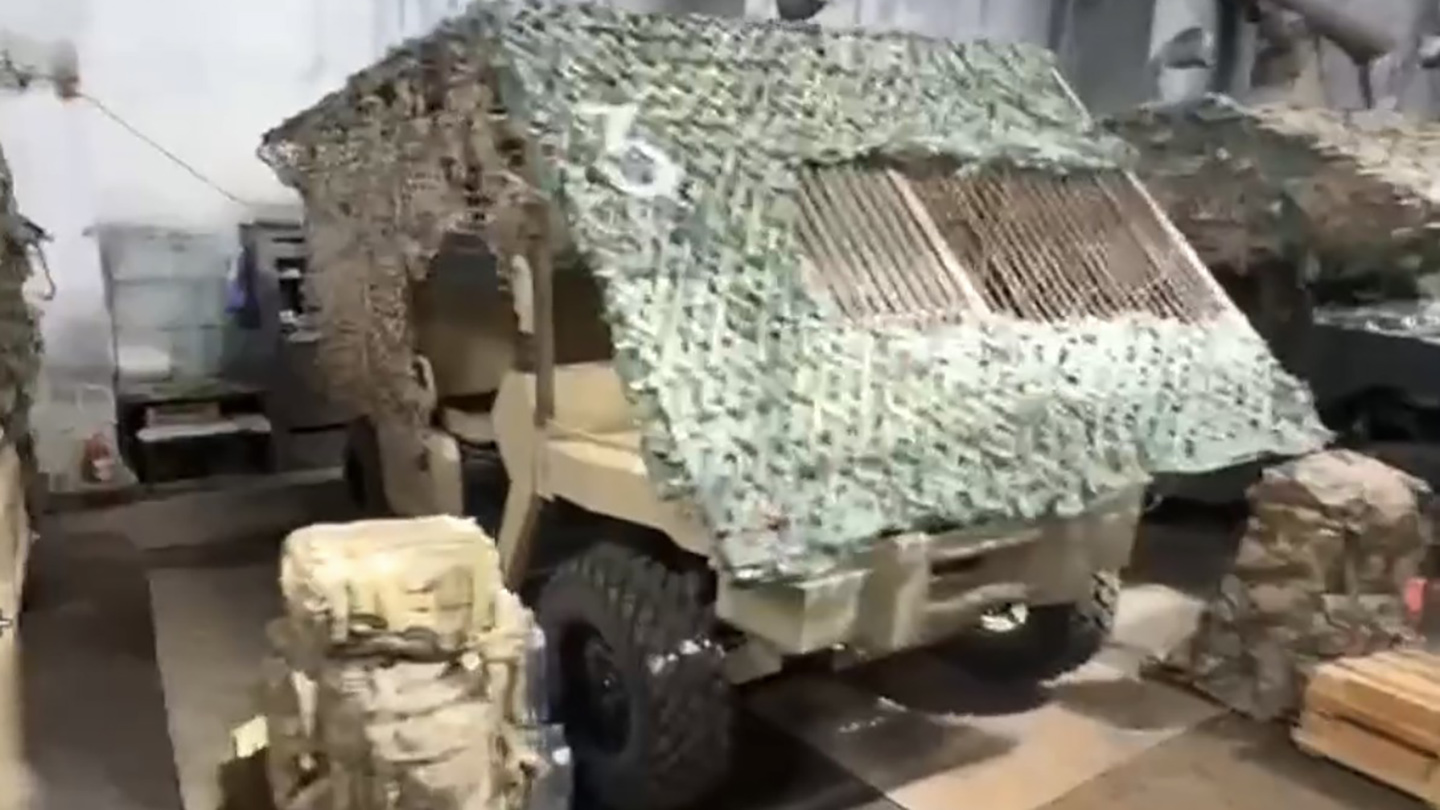Standing inside a cavernous garage, Russian military blogger Alexander Sladkov shows off the latest iteration of the so-called cope cage craze. As the camera pans across the workspace, about a half dozen Chinese-made DesertCross All Terrain Vehicles (ATVs) come into view, outfitted with metal caging installed to ward off Ukrainian drones.
A few months ago, Russian troops began using ATVs and motorcycles to attempt quick attacks as mechanized infantry in the push toward Kharkiv and around Avdiivka. However, they soon found themselves targeted by Ukrainian First Person-View (FPV) drones. To counter that, it appears that the Russians have begun to install so-called metal cope cages on both types of vehicles.
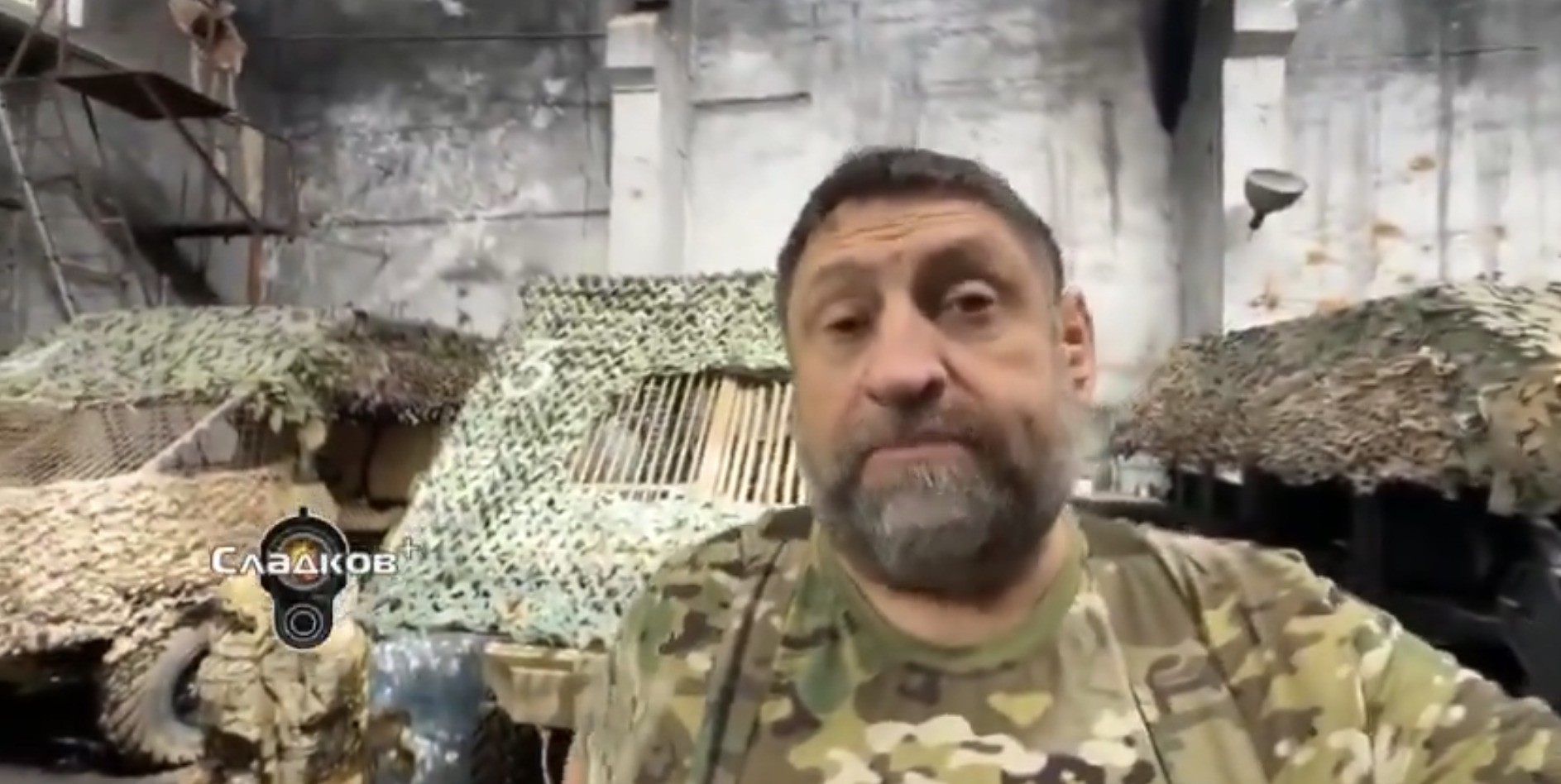
In his 139-second video, Sladkov alternately praises the work and grouses about why it had to be done to the ATVs, dubbed “combat golf carts.”
“The [ATVs] received from our native ministry broke down at the training ground,” said Sladkov, according to a machine translation of his Telegram channel. “We welded it, digested it, tuned it – and only then went into battle. All this is non-standard equipment.”
Some of the modified ATVs have mesh while others have metal slats.
“I believe that the Motherland will see the problems of these trenchers and transform the system,” he added, suggesting that the Russian Defense Ministry and industry should produce these modifications at the factory level. “If motorcycles are productive, then they should be! Standardly supplied by the Motherland. Like copters, etc., etc. There is optimism here.”
ATVs, both the upright quad style and the buggy style, are widely used by Russia and Ukraine alike because they are small, fast, lightweight, and able to traverse the crater-pocked, often-muddy battlefields. They can also carry troops, small arms and even anti-tank guided missiles.
You can see a couple of examples of that in the following videos.
Unfortunately for its occupants ATVs are also unarmored and highly vulnerable to drones, artillery, mines, ATGMs and small arms fire. As you can see in the video below, troops in these vehicles can be sitting ducks when facing off against FPV drones. So it’s isn’t an illogical step that combat golf carts would be equipped with the additional perceived protection of a cope cage.
Motorcycles have been widely used by both sides as well for their stealthiness, mobility, utility and gas mileage. Like ATVs, they are vulnerable to a plethora of threats, hence the cope caging, which make the bikes look like two-stroke rolling chicken coops. Video has emerged showing the motorcycle modifications offered no protection against the kind of blast fragmentation warheads FPV drones often deliver. Whether the ATVs can survive such blasts is also unlikely.
As drones have transformed the battlefield, especially fast, highly maneuverable First Person-View (FPV) variants, both sides have scrambled to add these measures to a wide array of equipment. Cope cages first appeared on Russian armor just prior to the all-out invasion of Ukraine in late 2021. The ad-hoc solutions (or attempted solutions) to different threats to armor, which continue to evolve as the war drags on, are now a more regular accessory for combat conveyances.
These protective measures are becoming increasingly elaborate, as evidenced by Russian “turtle tanks” that first emerged on the battlefield in early April featuring distinctive armor “shells” that give the tanks their nickname.
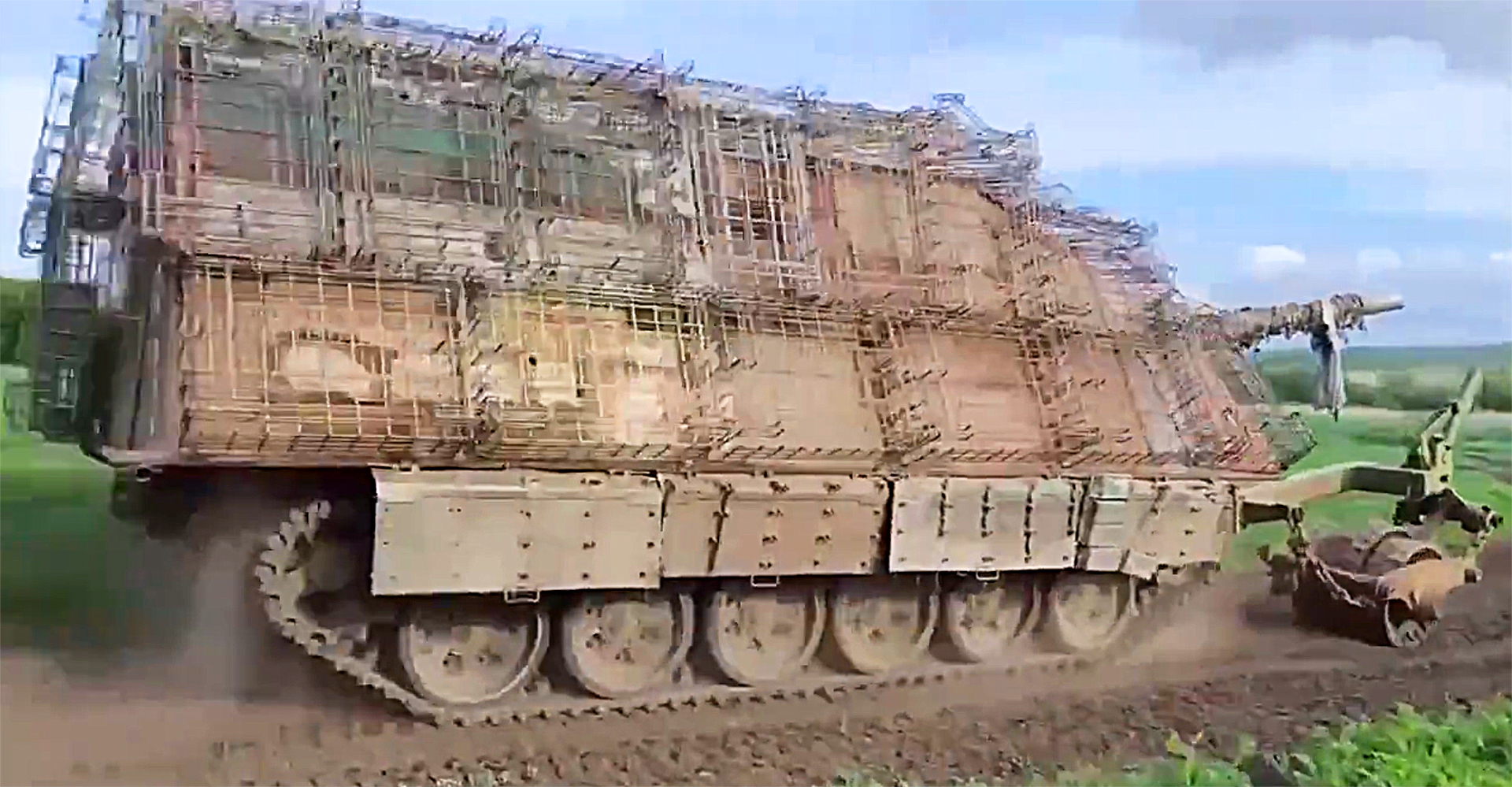
Ukraine too has crafted elaborate cope cages for its equipment, like Polish-supplied 155mm Krab self-propelled howitzers with particularly extensive arrays of screens around their turrets.
More recently, Ukraine’s U.S.-supplied M1A1 Abrams tanks received new production-standard anti-drone armor screens on their turrets. You can read more about that in our original story here.
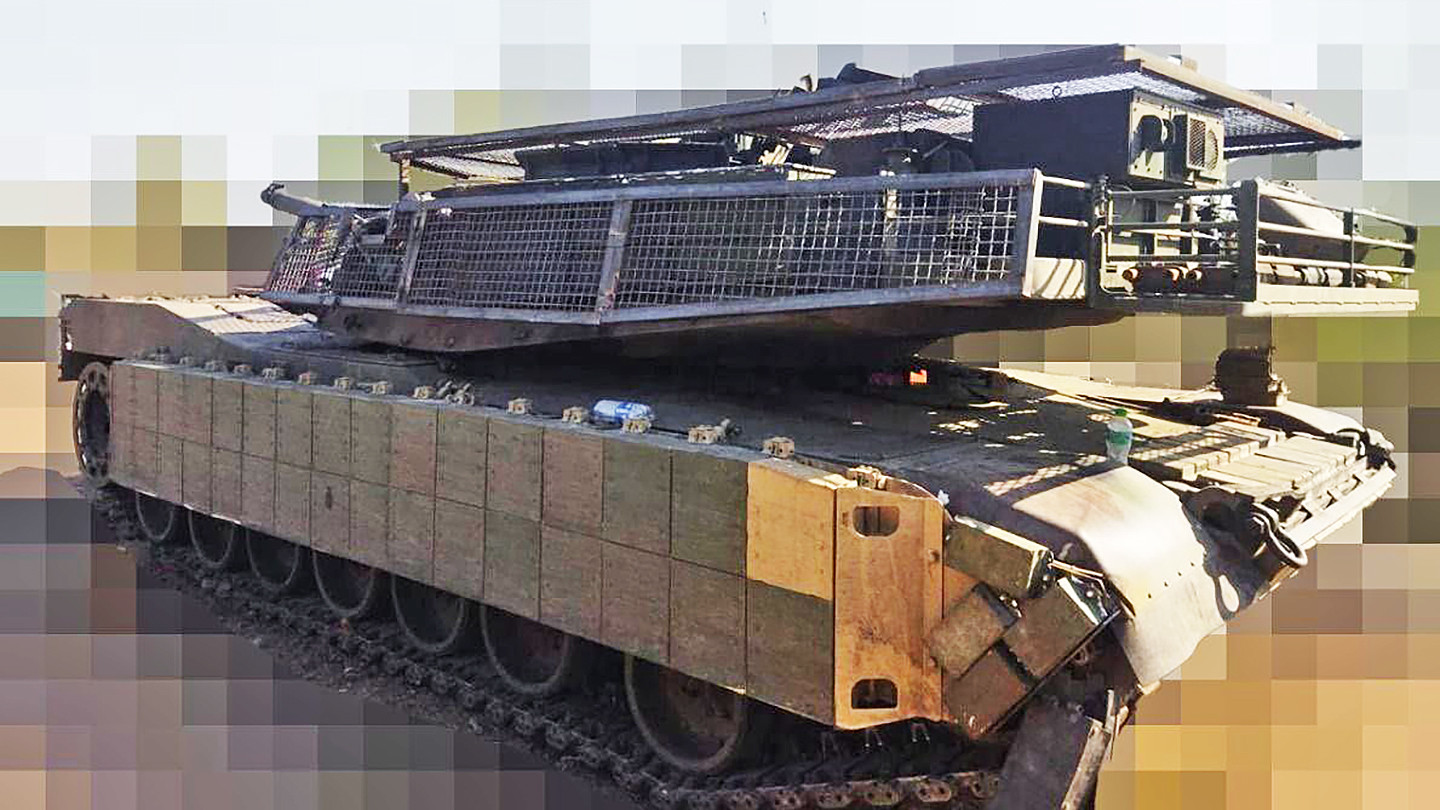
Russia is also installing these cages at the factory, like those arranged around the rocket pods of the new TOS-3 ‘Dragon’ thermobaric rocket launchers. As we noted in our story about the Dragons, the Russians began to fashion factory-made, production-component cope cages and other anti-drone measures on armored vehicles around the summer of 2023.
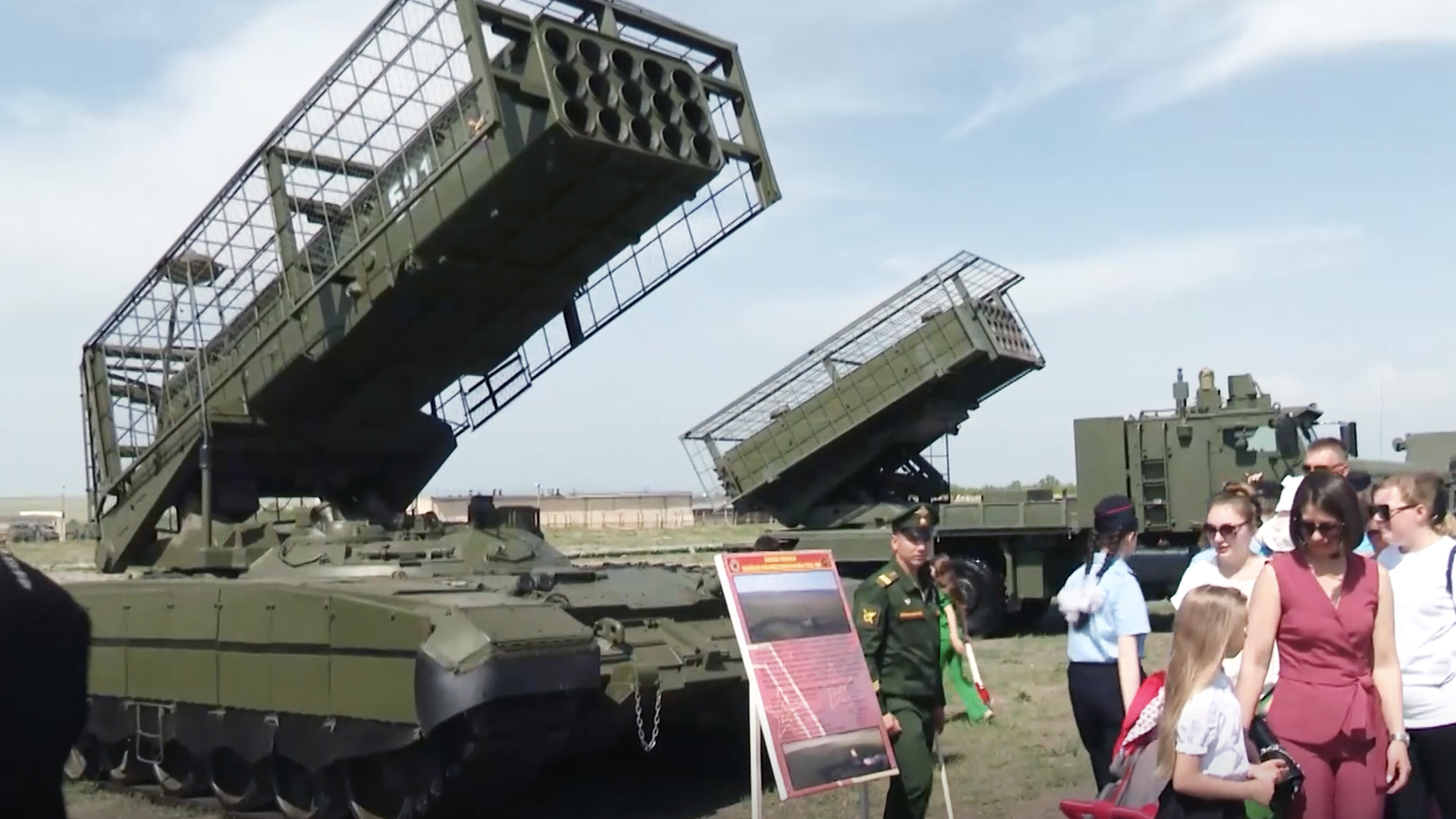
Still, the need for ad-hoc modifications remains. The garage-built ATV and motorcycle cope cages exemplify the do-it-yourself add-ons both sides have been making to equipment, the vast majority of which was designed and built long before drones became ubiquitous on the battlefield.
The utility of these systems have already proven to be limited, as you can see from this Ukrainian FPV drone attacking a Russian tank.
It probably won’t be long until similar videos emerge of destroyed cope cage-clad combat golf carts and motorcycles.
Contact the author: howard@thewarzone.com
